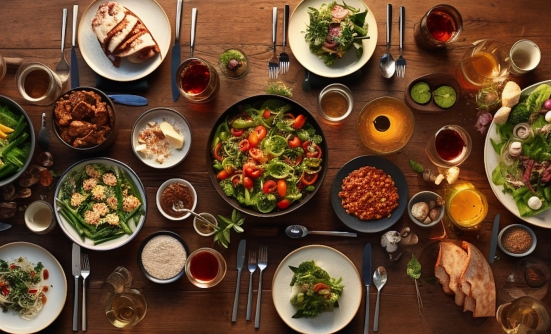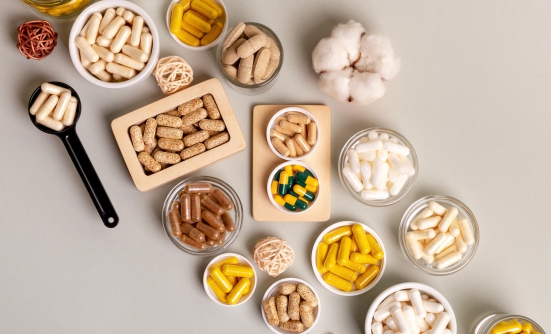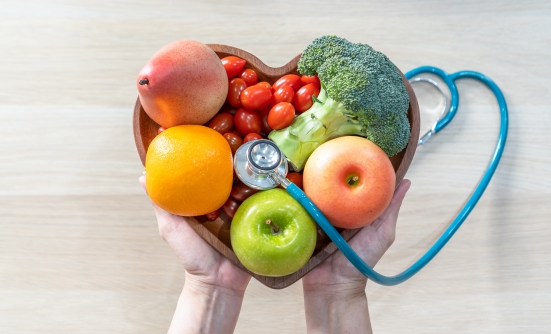In this time of social distancing, you may question what foods to have around, how to keep food safe, and how to maximize nutritional intake. Yes, it’s surreal for the entire country (and world) to do this at the same time, but many patients with cancer and cancer survivors have had to social distance themselves from others when their red or white blood counts are low or when their immune system is weakened.
Although you probably have plenty of access to food during times when you need to isolate, you will feel less stressed if you have what you need in your cupboard and freezer.
Here are some key things you need to know to maintain good health while in physical isolation.
Yes, Canned and Frozen Produce Are Good for You!
I like to remind my patients that “any vegetable is better than no vegetable.” Canned fruits and vegetables can be just as nutritious as fresh ones. The fruit and vegetables are picked at maximum ripeness and are canned within hours of being harvested. After canning, the fruit and vegetables are transported to be sold and all of the nutrition is preserved.
Canned foods often have sodium added to them. You can reduce this sodium by rinsing canned goods before eating them. When using canned vegetables as a side dish or as part of a recipe, canned food is only one part of the meal and therefore is balanced out by the other ingredients in the dish.
The top recommended canned produce to have on hand includes beans, diced tomatoes, tomato paste, and fruit packed in 100% juice.
The top recommended frozen produce to have available includes green beans, broccoli, corn, diced onion, soup mix, berries, mango, pineapple, and banana.
Canned and Frozen Vegetable Recipe: Vegetable Soup
Here is an easy recipe for a delicious soup made with canned and frozen vegetables.
Ingredients:
- 2 tsp. garlic powder
- ½ cup frozen diced onions
- 1 can carrots (or 2 cups frozen carrots)
- 32-oz container vegetable broth
- 2 cans fire-roasted diced tomatoes
- 1 can diced potato
- 1½ tbsp. honey
- 1 tbsp. turmeric
- ½ cup frozen sweet corn
- ½ cup frozen green beans
- Salt and freshly ground black pepper
Directions:
- Place all ingredients in crockpot or in a pot on the stove and stir.
- Cook until veggies are heated through.
- To add protein, consider tossing in some beans or chopped smoked turkey from the deli.
Frozen Vegetable Recipe: Sautéed Vegetables
The following is an easy, delicious recipe to make with frozen vegetables.
Ingredients:
- Oil
- Frozen diced onions
- Frozen vegetable of choice (I typically use green beans or broccoli)
Directions:
- Put oil in pan and heat.
- When oil is hot, add onions and cook until the water is mostly cooked out of the onions.
- Add frozen vegetable and sauté until cooked through. Add water to coat the pan, if needed, to prevent burning.
- Add salt to taste.
Other Shelf-Stable Foods to Keep on Hand
When you need to cook at home, the last thing you want is to realize that you don’t have one of the ingredients you need for a recipe. For baking, the essentials you should have include flour, sugar (brown and white), baking powder, baking soda, and salt.
Having these ingredients at home, you can whip up some cookies, which is always good for the soul. If you want to bake bread, you should also have yeast on hand.
Whole grains are also very important to have. Brown rice, oats, pasta, and quinoa are very shelf stable and can be used in a variety of recipes for breakfast, lunch, or dinner.
I always have whole grain crackers available, which are great to have with soup, cheese, or hummus as a snack or as a side dish. In addition, whole grain cereals are essential to have at home. When you don’t feel like cooking, having cereal with milk and fruit is a great fall-back plan.
Don’t forget to keep some protein options in the pantry. Dried lentils and beans, nuts and nut butters, and canned fish and chicken are essential foods that can help you create a quick snack or meal.
The top recommended shelf-stable foods to have include brown rice, oats, quinoa, pasta, lentils, dried beans, broth, canned fish and chicken, cereal, crackers, nuts and nut butters, and dried fruit.
Shelf-Stable Food Recipe: Mediterranean Tuna Salad
Here is a recipe for a tasty salad that is packed with protein.
Ingredients:
- 1 can reduced-sodium tuna in water, drained
- 1 can white beans, drained and rinsed
- 1 tbsp. capers
- ¼ cup Kalamata olives
- 1 tbsp. olive oil
- ½ tbsp. red wine vinegar
- 1 tsp. oregano
- Salt and pepper
Directions:
- In a bowl, whisk together olive oil, vinegar, oregano, salt, and pepper.
- Add tuna, beans, olives, and capers, and stir to combine.
- Enjoy this salad on its own, over salad greens, or with crackers.
Is Our Food Safe?
We are fortunate to have a strong food system in the United States. We rarely have any food shortages, including right now. Farmers, ranchers, truckers, and grocery workers are working hard to ensure that we continue to have quality food available. If you know anyone involved in food production, thank them for their work!
Food from the grocery store, and even take-out food or food delivered from a restaurant, is safe to eat. It is good practice to dispose of the bags and boxes that the food was in when you get home, and to wash your hands afterward.
How Do I Keep Food Safe Once It’s In My Home?
Keeping food safe to eat once you are home is the biggest concern when it comes to food-borne illness. Coronavirus is not currently known to spread via food, but other viruses and bacteria can grow in your food.
According to the Centers for Disease Control and Prevention (or the CDC), the 4 basics of food safety are—clean, separate, cook, and chill:
- Clean: wash your hands and cooking surfaces often. Always wash your hands for 20 seconds before preparing foods. Wash counters, cutting boards, and knives with hot, soapy water. To clean produce, all you need is water and a vegetable scrub brush to clean root vegetables.
- Separate: don’t cross contaminate food. Keep raw meat and eggs separate from ready-toeat food, including while you shop and when the food is in your refrigerator. Always use separate cutting boards to avoid cross contamination of foods.
- Cook food to the right temperature. When cooking food, heat it to the proper temperature to ensure that any bacteria are killed before you eat it. When reheating food, heat everything completely through before eating it.
- Chill: refrigerate food promptly. Keep your refrigerator at 40 degrees or cooler. Put cooked food away in the refrigerator within 1 to 2 hours of preparing it. When thawing food, use the refrigerator, cool water, or a microwave. Do not thaw food on the kitchen counter!
Following these recommendations can help you stay nourished and healthy.
Key Points
- According to the CDC, the 4 basics of food safety are—clean, separate, cook, and chill
- Always wash your hands for 20 seconds before preparing foods
- Food from the grocery store, and even take-out food or food delivered from a restaurant, is safe to eat
- For baking, the essentials you should have at home include flour, sugar (brown and white), baking powder, baking soda, and salt










